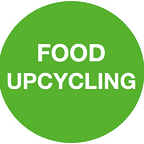The future of Pasta
This post describes, how pasta could look like in the future.
If you walk through the supermarkets, you can see that pasta is often labeled with Italian names and other similar attributes to underline the positioning thereof. In some cases, even the precise location of the mill in Italy is mentioned. Playing the “Italian” card to posit pasta is for sure a good idea, but not all pasta manufacturers are located in Italy or can use an Italian brand name.
So what option do they have to differentiate?
To answer this question, I interviewed several pasta users to understand what needs and problems do they confront with while consuming pasta. Accordingly, define a new pasta product that is freshly innovative and inspired by users.
The first results I got showed me that some people avoided eating pasta due to its high content of carbohydrates. Another point seemed to be the matter of low saturation effect after consumption if pasta is eaten as a main dish. The third point was reaching the perfect optimum hardness of pasta during the cooking process.
Instead of seeing the three above mentioned points as problems, we can see them as sources and opportunities for creating a more functional and inventive pasta. One ingredient can solve all the three above mentioned points. For instance, the Japanese Shirataki noodles contain characteristics that prevent the noodle from over softening while cooking, in the same time Shirataki is known for its few carbohydrates per intake. But has the Shirataki the potential to replace Spaghetti? Likely not, But, it can inspire us to solve the pasta problem. Differentiation on a functional level against the emotional Italianità could be a real advantage that improves user’s experience of eating pasta.
Mirko Stanic is an expert in food innovation and has written a book about it. Download it on Amazon
